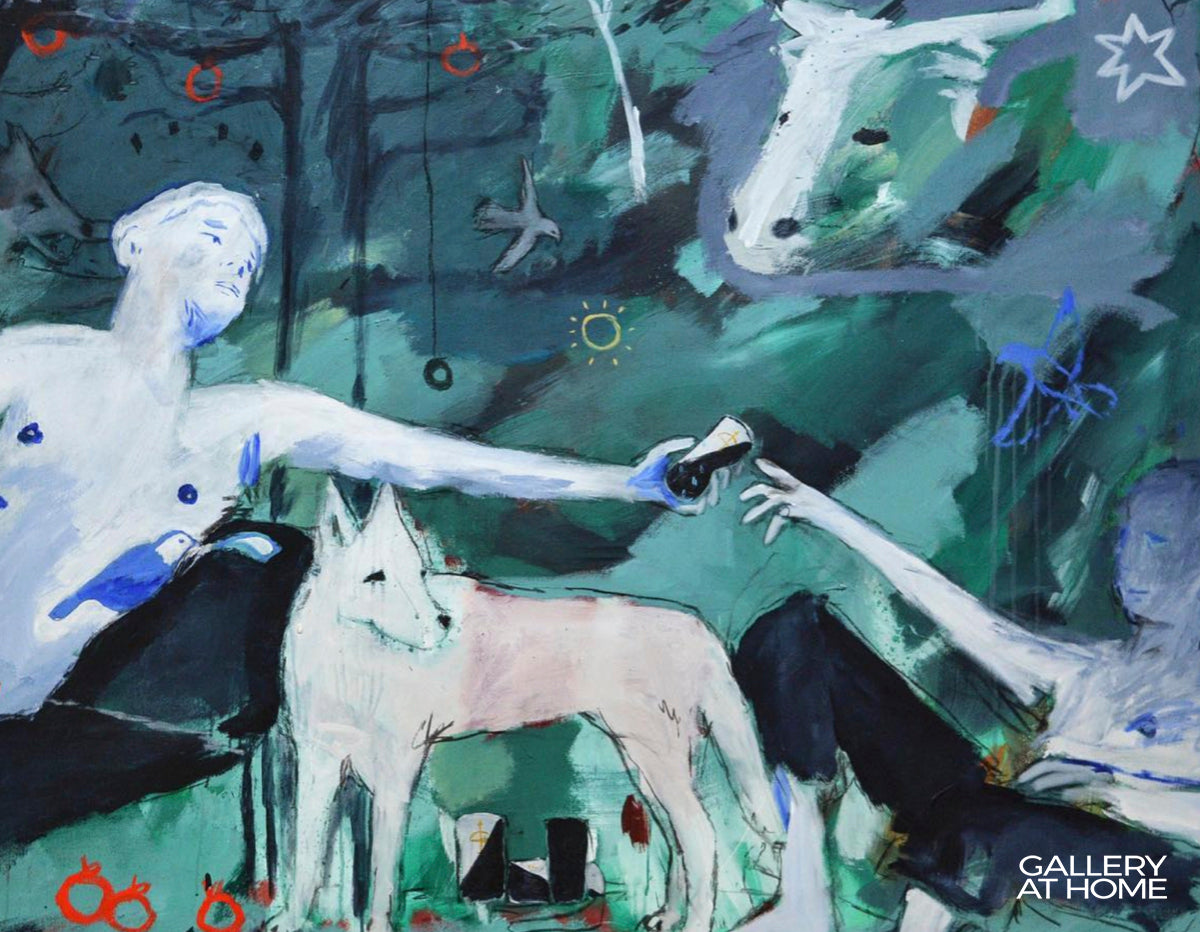


Fever Dreams
SEPTEMBER 2022
Growing up in a household of his father's paintings and prints, from a young age Billy Bagilhole drew cowboys and Indians, animals, religious figures; imitating the images that had been created by his father (Robin Bagilhole) and were hanging on the walls. After his father passed away in 2001, when Billy was just 6 years old, those works continued to be of fascination; his experience embellished as a time capsule of creativity for ongoing works. Bagilhole often states that the reason he continued to persist within art was because of his father, and this is why his empathy for mark-making, for creating, is so strong.
Bagilhole predominantly works through the mediums of painting and filmmaking. Often covering canvases with salt and thick paint, he enjoys the technicality of painting, of colour and within the eye of the lens. Bagilhole frequently works through internal gestures and hints of nostalgic representations of an abstracted life; often colliding colour with imagery of sinisterness. He feels that painting becomes an expressionistic form of understanding, and that by leaving the work as an open question, an unknown metaphor, the meaning within painting or filmmaking, within art itself, becomes infinite.
He states the attraction to painting is the ability to create the unknown, the unimaginable and the uncanny; forming a sense of bewilderment. With sequencing themes such as the often seen fish bones, his reoccurring character "Edwin" or the bull, we begin to see a hint at the relationships between these often differentiated pieces of imagery. Bagilhole believes that we are inherently curious and that the pursuit of art offers an expression for this curious nature; making art becomes a medium for wonder, something unsolvable, a sensory koan that engages both artist and viewer.
In Fever Dreams Billy’s process has evolved into a more fluid application of paint and a strong but muted palette. Nods to familiar motifs are present, but there are deeper narratives emerging; stories within stories, complex and darkly delicious.
"Fever Dreams' was born from a mistake. I was working on a painting of a dog back in January in my small studio in South London, this painting is now called 'Over The Hoop' and it's on display here in this exhibition. The painting was originally planned out in a sketchbook, drawn out onto the canvas & then the colour palette and paint followed shortly after. This has been quite a common process in my practice for just over a year now. This all changed when suddenly one day I tripped over a pot of yellow paint that spilled all over this painting and I looked at it in pure frustration. I proceeded to pick the painting off of the floor and let the yellow paint start spilling down the canvas creating quite an interesting effect. From there I drew a large circle over the top in charcoal and in turn the piece became what it is today.
From that day onwards for the foreseeable 3-4 months I worked purely from deliberate mistakes, subconscious gestures and following the path of the paint. If the work ever felt too structured I would try and deliberately destroy or hamper that part of the work. I sought out faces, animals & natural forms from the gestures I was making with the paint and where one seed would sprout another would emerge. For example, in the painting 'Death Row Dinner/Bonnie & Clyde' the whole piece started when I drew out a magpie and then saw the shape of a shoulder appear below it and I continued from there; creating a story completely from the subconscious.
These works are often difficult for me to decipher until months down the line when I've had time to reflect and understand what I worked on. It's like a snake shedding skin. A body of work created in a small amount of time often gives me perspective and understanding of where my mind was at, at that moment in time. I can already start to see some things clearly, like the unhappy sun that I'm convinced is me talking to me about the lack of daylight in my small studio without any windows. Beyond this I often like to keep elements of what I understand about my work a secret because in essence, these stories and these works are responses to the same emotions & experiences that any other person sees, feels or experiences themselves and I think the beauty of the work is that you can tether your own story and write your own narrative…"
